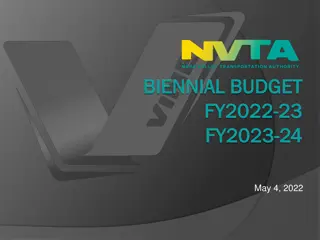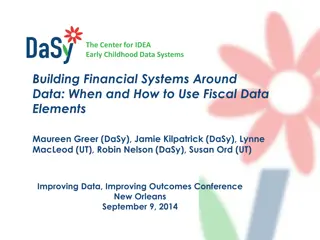Understanding Fiscal Deficit and Government Financing
Fiscal deficit occurs when a government's expenses exceed its revenue, leading to deficit financing through borrowings or printing more currency. Borrowings from the market are preferred over printing money to avoid inflation. However, excessive borrowing can also have limitations due to market constraints. It is crucial for governments to manage fiscal deficits effectively to maintain economic stability.
Download Presentation

Please find below an Image/Link to download the presentation.
The content on the website is provided AS IS for your information and personal use only. It may not be sold, licensed, or shared on other websites without obtaining consent from the author. Download presentation by click this link. If you encounter any issues during the download, it is possible that the publisher has removed the file from their server.
E N D
Presentation Transcript
FED TAPERING FISCAL DEFICIT
Explaining Fiscal Deficit By Prof. Simply Simple
FISCAL DEFICIT The government needs money for its huge expenses. We can broadly divide govt. expenses into two types: 1. Revenue expenses 2. Capital expenses The money spent by the government for paying salary to its staff is revenue expense and the money spent for constructing a hospital is capital expense.
FISCAL DEFICIT So how does the govt. meet these expenses? The government finances its expenses by 1. Revenue by direct and indirect taxes 2. Revenue by non-tax means include Revenue receipts These include dividends received from public sector companies, fees, fines, forfeitures etc. Capital receipts These include sale of PSUs, recovery of loans, borrowings of the government Revenue receipts are recurring in nature like the salary you earn while capital receipts are occasional in-flows like the proceeds you may receive on selling your house
FISCAL DEFICIT So where is the deficit? The expenses that the government incurs is always more than the income it makes. This difference or deficit is known as Fiscal Deficit . It is expressed as a percentage of GDP The financing of this deficit is known as deficit financing
FISCAL DEFICIT So how is this deficit financed??? Through government borrowings. It is due to this reason we had included borrowings of the government as revenue in one of our earlier slides OR Through printing of additional currency notes.
FISCAL DEFICIT Which is a better option then??? Borrowing money from the market is a better option because if the government were to print more notes it would increase supply of money in the economy thereby reducing its buying power and causing inflation. Inflation would hurt one and all making the government un- popular. Therefore, borrowing from the market is a better option as it does not alter money supply. But this too cannot go on endlessly. To understand this let s look at the next slide.
FISCAL DEFICIT Government borrowings too have a limit Borrowing money from the market cannot be an endless strategy purely because there is limited money in the market and needs to be made available for other borrowers as well Too much of borrowings will drive up interest rates making credit expensive and thereby putting pressure on prices. Hence, the only way to control the deficit in the long run is by spending less and earning more.
DISCLAIMER The views expressed in this lesson are for information purposes only and do not construe to be any investment, legal or taxation advice. The lesson is a conceptual representation and may not include several nuances that are associated and vital. The purpose of this lesson is to clarify the basics of the concept so that readers at large can relate and thereby take more interest in the product / concept. In a nutshell, Professor Simply Simple lessons should be seen from the perspective of it being a primer on financial concepts. The contents are topical in nature and held true at the time of creation of the lesson. This is not indicative of future market trends, nor is Tata Asset Management Ltd. attempting to predict the same. Reprinting any part of this material will be at your own risk. Tata Asset Management Ltd. will not be liable for the consequences of such action. Mutual Fund investments are subject to market risks, read all scheme related documents carefully.























